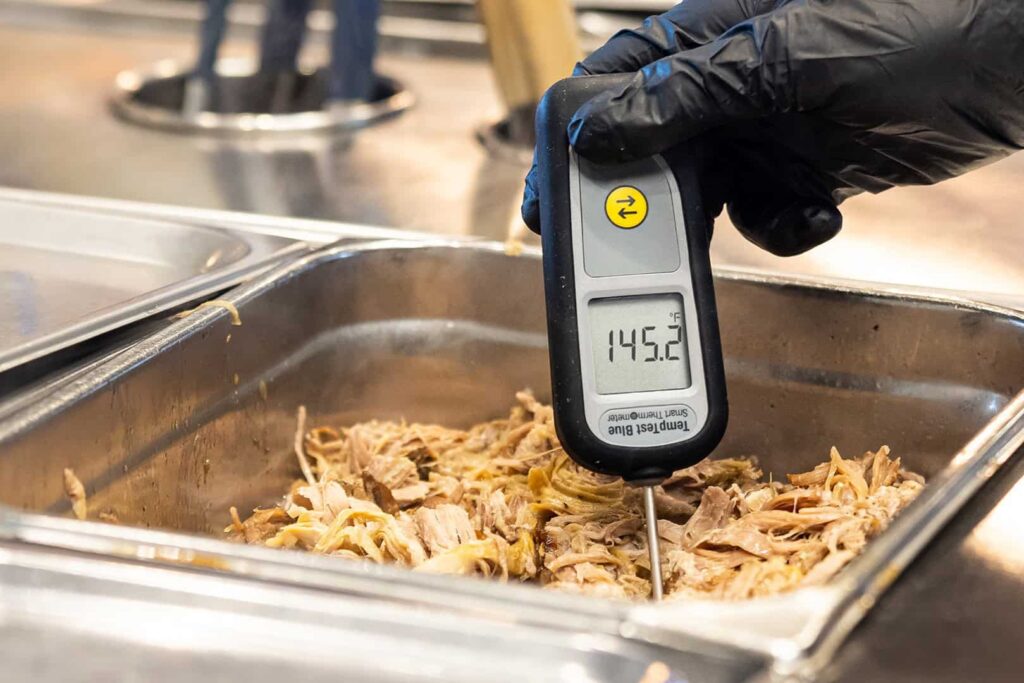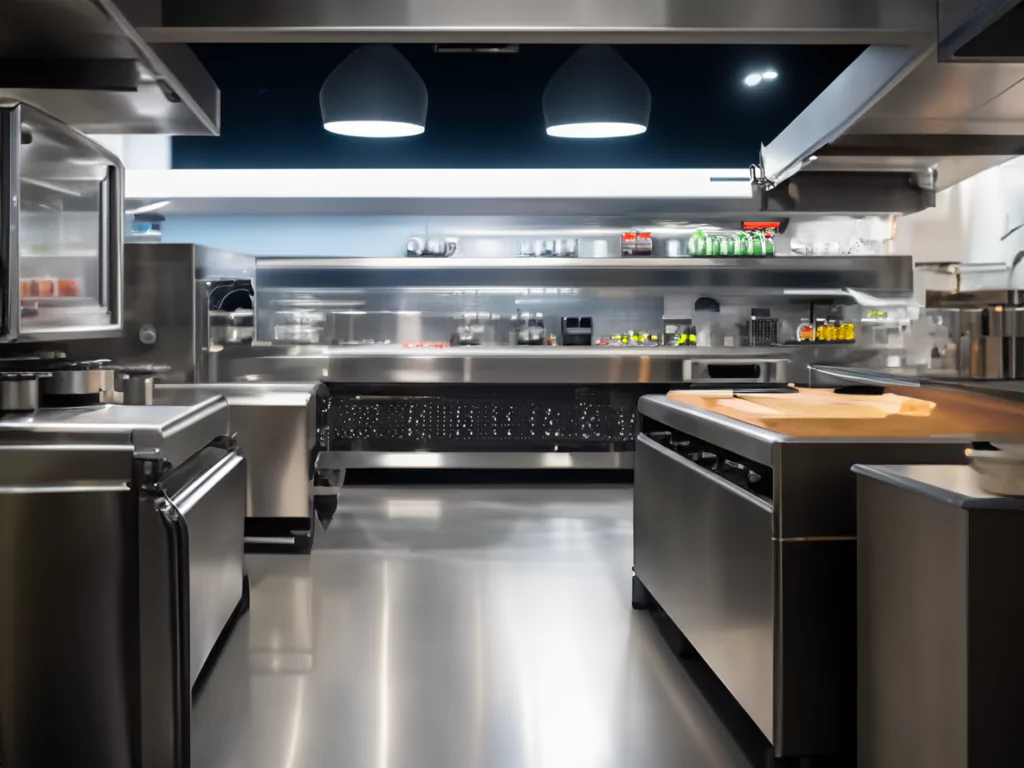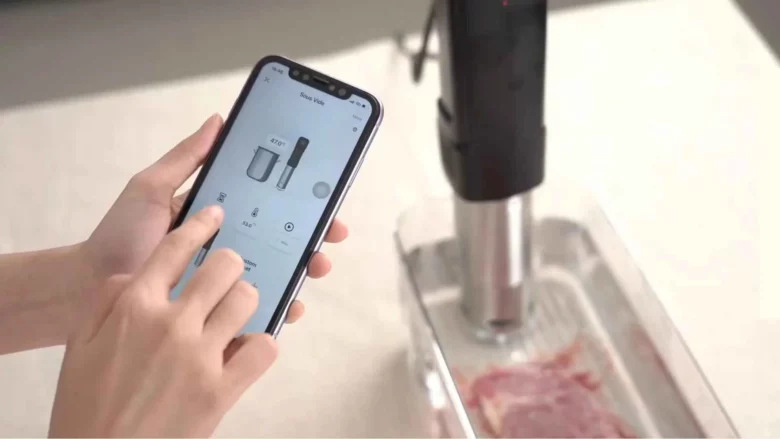How Can Restaurants Ensure Food Safety and Operational Efficiency Through Temperature Monitoring?
Temperature monitoring is crucial for restaurants, as it directly affects food safety and overall success. By controlling temperatures effectively, restaurants can prevent harmful bacteria from growing, minimise food waste, and preserve the quality of ingredients throughout storage and service.
The Challenges of Traditional Manual Temperature Checks
While manual temperature checks have been the norm for many years, they come with their own set of challenges that can hinder efficiency:
Modern restaurants rely on sophisticated resturant temperature monitoring tools to maintain food safety standards and operational efficiency. These digital solutions range from basic handheld devices to advanced automated systems.

- Time-consuming processes: Staff members often have to step away from serving customers to conduct manual checks, leading to potential delays in service.
- Human error: Readings and documentation done by hand are prone to mistakes, which can compromise food safety.
- Inconsistent monitoring: Without a systematic approach, temperature checks may not be conducted at regular intervals, increasing the risk of temperature fluctuations going unnoticed.
- Delayed response: If a temperature issue arises, it may take time for staff to notice and address it, potentially putting food safety at risk.
- Paper-based records: Relying on physical records makes it easy for important documentation to get lost or damaged.
How Modern Temperature Monitoring Tools Can Help
Fortunately, there are now modern temperature monitoring tools available that can address these challenges and offer even greater benefits:
- Digital sensors: These devices accurately measure temperatures without the need for manual intervention, reducing the risk of human error.
- Automated systems: With automated temperature checks in place, staff members can focus on providing excellent customer service while the system handles monitoring in the background.
- IoT-enabled devices: Internet of Things (IoT) technology allows for remote monitoring and control of temperature settings, making it easier to manage multiple storage units from a central location.
These tools create a powerful framework for maintaining food safety standards while also improving operational efficiency.
Learn more on: Choosing the Right Wireless Temperature Monitoring Device for Your Operation
The Key Benefits of Modern Temperature Monitoring
Here are some of the key advantages that modern temperature monitoring offers:
- Real-time tracking: With digital sensors in place, restaurant owners can monitor temperatures across all storage units in real-time. This means any deviations from the desired range can be immediately addressed before they impact food quality or safety.
- Instant alerts: In addition to real-time tracking, modern systems often come equipped with alert features that notify staff members or managers whenever there is a significant temperature change. This ensures prompt action can be taken if an issue arises.
- Automated documentation: Compliance requirements often involve keeping detailed records of temperature readings. Instead of relying on manual documentation which is prone to errors or omissions, automated systems can generate accurate reports automatically.
- Remote access capabilities: With IoT-enabled devices, restaurant owners or managers can monitor temperatures remotely using their smartphones or computers. This flexibility allows them to stay informed even when they are not physically present at the restaurant.
- Data-driven insights: Over time, modern temperature monitoring tools collect valuable data about storage conditions and operational practices. Analyzing this data can reveal patterns or areas for improvement that may not have been apparent before.
This guide explores the essential tools and technologies revolutionising restaurant temperature monitoring. You’ll discover how automated systems enhance accuracy, reduce labour costs, and provide peace of mind through reliable food safety management.
[Ready to transform your restaurant’s temperature monitoring? Book a demo with Squizify to see these solutions in action.]

What Are the Common Tools Used for Restaurant Temperature Monitoring?
1. Digital Thermometers and Probes
- Instant-read digital thermometers for spot-checking food temperatures
- Probe-style monitors for continuous temperature tracking in refrigeration units
- Bluetooth-enabled devices that sync readings to mobile applications
2. Temperature Sensor Types
- Thermocouples: Quick response time, ideal for spot-checking food temperatures
- RTDs (Resistance Temperature Detectors): High accuracy for cold storage monitoring
- Thermistors: Cost-effective solution for ambient temperature measurement
- Semiconductor sensors: Digital accuracy with built-in signal processing
3. Contact vs Non-Contact Sensors
Contact Sensors
- Direct temperature measurement through physical contact
- Precise readings for food core temperatures
- Suitable for refrigeration units and cooking equipment
Non-Contact Sensors
- Infrared technology for remote temperature readings
- Quick scanning of multiple items without contamination risk
- Perfect for receiving inspections and surface temperature checks
These tools integrate with IoT temperature monitoring systems, creating a network of connected devices that provide real-time data access and automated record-keeping. The choice between different sensor types depends on specific monitoring needs, from food preparation to storage areas. Find more about storage on https://pubmed.ncbi.nlm.nih.gov/20544372/
How Do Automated Temperature Monitoring Systems Improve Accuracy and Efficiency?
Automated temperature monitoring systems are changing the way we ensure food safety by removing common human mistakes in collecting and recording data. These systems take exact temperature readings at set times, so there’s no chance of misreading or incorrectly writing down measurements.
Real-time alerts transform rapid response capabilities:
- Instant notifications when temperatures go outside safe limits
- Automated alerts sent to designated staff members via mobile devices
- Quick action protocols triggered automatically for immediate intervention
The integration of trend analytics provides valuable insights into equipment performance and operational patterns:
- Historical temperature data analysis identifies potential issues before they escalate
- Pattern recognition helps predict maintenance needs
- Custom reports highlight areas requiring operational adjustments
Time-saving benefits of automated systems:
- Elimination of manual temperature logging tasks
- Reduced staff time spent on compliance documentation
- Automated record-keeping accessible through digital platforms
These systems create a reliable digital trail of temperature monitoring activities, supporting both operational efficiency and food safety compliance. The automated data collection process runs 24/7, ensuring consistent monitoring without gaps or oversights that can occur with manual checks.
Advanced monitoring solutions also enable multi-location temperature tracking from a single dashboard, allowing restaurant managers to oversee multiple storage units, cooking areas, and serving stations simultaneously.
What Role Does IoT Technology Play in Modern Temperature Monitoring Solutions?
IoT technology is changing the game for restaurant temperature monitoring by using wireless sensors and smart connectivity. These advanced systems create a network of sensors that constantly track temperatures in different areas of your restaurant.
Key Features of IoT Temperature Monitoring:
- Real-time Data Transmission: Wireless sensors automatically send temperature readings to central monitoring systems
- Remote Access Capabilities: Check temperature data from any location using smartphones, tablets, or computers
- Automated Documentation: Digital records stored securely without manual input
- Multi-Location Management: Monitor multiple restaurant locations from a single dashboard
Cloud-based platforms enable restaurant managers to access critical temperature data 24/7. These platforms store historical data, creating comprehensive temperature logs for each monitored area. The system’s smart algorithms analyse patterns and detect anomalies, triggering instant notifications when temperatures deviate from safe ranges. To read more about temperature click here.
Benefits of Cloud Integration:
- Secure data storage with automatic backups
- Scalable solutions that grow with your business
- Cross-platform compatibility
- Simplified compliance reporting
- Multi-user access with customisable permissions
IoT sensors eliminate the need for manual temperature checks through continuous monitoring. The wireless nature of these devices allows for flexible placement in various locations – from freezers and refrigerators to food preparation areas. This comprehensive coverage ensures consistent temperature monitoring across your entire operation.
How Do Temperature Monitoring Tools Support Food Safety Compliance In Restaurants?
Temperature monitoring tools are essential for ensuring food safety compliance in restaurants. These digital solutions make it easier to follow HACCP guidelines by automatically tracking and documenting critical control points.
Key compliance features include:
- Real-time temperature logs that align with HACCP principles
- Automated alerts when readings fall outside safe ranges
- Digital documentation of corrective actions taken
- Time-stamped records for health inspections
- Customisable reporting templates for different regulatory requirements
Modern monitoring systems generate detailed compliance reports that satisfy health code requirements. These reports include:
- Temperature readings across all storage units
- Duration of any temperature violations
- Staff response times to alerts
- Corrective measures implemented
- Equipment maintenance records
The automated nature of these tools eliminates manual record-keeping errors and creates an unbroken chain of documentation. Health inspectors can access comprehensive temperature histories, demonstrating your restaurant’s commitment to food safety standards.
Regulatory benefits:
- Simplified audit preparation
- Instant access to historical data
- Proof of due diligence
- Reduced risk of non-compliance penalties
- Enhanced transparency for health inspections
Temperature monitoring systems integrate seamlessly with existing HACCP plans, creating a robust framework for maintaining food safety standards. The digital documentation ensures your restaurant stays ahead of regulatory requirements while protecting customer health.
What Are The Operational Benefits Of Using Advanced Temperature Monitoring Solutions In Restaurants?
Advanced temperature monitoring solutions transform daily restaurant operations through automated processes and real-time data insights. These systems create significant cost reductions by eliminating manual temperature checks, allowing staff to focus on customer service and food preparation.
Time and Cost Efficiency
- Automated monitoring reduces labour costs by up to 70%
- Digital records eliminate paper-based documentation expenses
- Instant alerts prevent costly equipment breakdowns
- Reduced need for emergency maintenance calls
Inventory Protection and Waste Reduction
- Real-time temperature tracking prevents stock spoilage
- Smart alerts identify potential equipment failures before food quality is compromised
- Historical data helps optimise storage conditions
- Precise temperature control extends product shelf life
The implementation of advanced monitoring systems directly impacts your bottom line through:
- Reduced food waste from temperature fluctuations
- Lower energy costs through optimised equipment performance
- Decreased labour costs from automated monitoring
- Minimised replacement costs for spoiled inventory
These systems provide valuable data insights for inventory management:
- Temperature trend analysis for storage optimisation
- Equipment performance tracking
- Usage patterns for energy efficiency
- Stock rotation recommendations based on temperature history
Smart temperature monitoring transforms reactive maintenance into proactive management, protecting your valuable inventory and streamlining operational costs.
How Can Restaurants Implement Effective Temperature Monitoring Systems With Squizify?
Implementing an effective temperature monitoring system requires a structured approach and expert guidance. Squizify’s comprehensive onboarding process ensures restaurants can seamlessly integrate these essential tools into their operations.
Onboarding Process With Squizify: A Step-By-Step Guide
1. Initial Consultation and Assessment
- In-depth evaluation of your restaurant’s specific needs
- Analysis of current temperature monitoring practices
- Identification of key areas requiring automated monitoring
- Assessment of hardware requirements based on facility layout
2. Interactive Demo Session
- Live demonstration of Squizify’s temperature monitoring features
- Real-time showcase of alert systems and reporting capabilities
- Hands-on experience with the user interface
- Q&A session to address specific operational concerns
3. Custom Software Configuration
- Tailoring of temperature thresholds for different storage areas
- Setting up automated alerts based on your preferences
- Configuration of reporting templates
- Integration with existing restaurant management systems
4. Hardware Setup and Integration
- Professional installation of temperature sensors
- Placement optimisation for accurate readings
- Setup of label printing devices
- Configuration of wireless connectivity
- Testing of all hardware components
5. Staff Training Programme
- Comprehensive training sessions for all team members
- Practical demonstrations of daily monitoring tasks
- Hands-on practice with the Squizify platform
- Documentation and quick reference guides
- Role-specific training for managers and staff
6. Ongoing Support System
- 24/7 technical support availability
- Regular system health checks
- Access to software updates and new features
- Dedicated support team for troubleshooting
- Regular check-ins to ensure optimal system performance
The implementation process typically takes 2-3 weeks, depending on your restaurant’s size and requirements. Squizify’s team works closely with you throughout each stage, ensuring a smooth transition to automated temperature monitoring.
You can initiate this process by booking a demo through Squizify’s platform. During the demo, you’ll receive personalised guidance and can explore how the system adapts to your specific operational needs.
The platform’s flexibility allows for adjustments as your restaurant’s needs evolve. Whether you operate a single location or manage multiple venues, Squizify’s temperature monitoring system scales to match your requirements.
Tailoring Checklists To Meet Specific Operational Needs With Squizify’s Customisation Options!
Every restaurant has its own way of doing things, with specific processes, standards, and requirements. Using the same compliance checklists for every restaurant doesn’t work because it doesn’t take into account these unique needs. Squizify understands this and offers extensive customisation options to create tailored checklists that perfectly fit your restaurant’s workflows.
Key Customisation Features:
- Template Modification: Adapt existing templates or build new ones from scratch
- Task Scheduling: Set specific timing for temperature checks based on your service hours
- Alert Parameters: Define custom temperature thresholds for different storage units
- Responsibility Assignment: Designate specific staff members for different monitoring tasks
- Compliance Standards: Incorporate regional health codes and internal quality standards
The customisation process starts with understanding your restaurant’s unique requirements. Squizify’s team works directly with you to identify:
- Critical control points in your food preparation process
- Specific temperature monitoring needs for different food items
- Staff workflow patterns and responsibilities
- Local regulatory requirements
- Internal quality standards
Your customised checklists can include:
- Temperature monitoring schedules for different storage units
- Food safety verification steps
- Equipment maintenance checks
- Staff hygiene protocols
- Cleaning and sanitisation procedures
These personalised checklists integrate seamlessly with Squizify’s temperature monitoring tools, creating a comprehensive system that matches your operational flow. The platform’s flexibility allows for quick adjustments as your needs evolve, ensuring your temperature monitoring system remains aligned with your restaurant’s growth and changing requirements.
The customisation capabilities extend to reporting formats, allowing you to generate documentation that meets both internal management needs and external compliance requirements. This tailored approach helps streamline your operations while maintaining the highest standards of food safety and quality control.
Ensuring Smooth Adoption Of Squizify’s Temperature Monitoring System In Your Restaurant!
Squizify’s temperature monitoring system transforms your restaurant’s operations through a structured implementation approach backed by comprehensive training and support services. The system integrates seamlessly with your existing workflows, minimising disruption during the transition period.
Key Training Components:
- Hands-on Equipment Training: Your staff receives practical guidance on using temperature sensors, label printers, and other monitoring devices
- Software Navigation Sessions: Interactive tutorials help teams master the digital interface and reporting tools
- Custom Workflow Integration: Personalised training aligned with your restaurant’s specific operational procedures
- Compliance Documentation: Detailed guidance on maintaining digital records for food safety regulations
Support Services Available:
- 24/7 technical assistance via live chat
- Regular system health checks
- Remote troubleshooting capabilities
- Scheduled maintenance updates
The training programme adapts to your team’s learning pace, ensuring every staff member gains confidence in using the new system. Squizify’s support team remains accessible throughout the implementation phase, providing quick resolutions to queries and technical challenges.
Implementation Success Metrics:
- Staff competency assessments
- System utilisation rates
- Compliance report accuracy
- Temperature monitoring consistency
Restaurant managers receive detailed analytics on system adoption rates and performance metrics. These insights help identify areas needing additional support or training reinforcement.
The transition process includes regular check-ins with your dedicated support representative, ensuring your team maximises the system’s capabilities. Squizify’s approach focuses on building user confidence through practical experience, creating a foundation for long-term operational success.
Embracing Digital Solutions for Restaurant Success
Modern restaurant operations demand precision and efficiency in temperature monitoring. Digital solutions like Squizify transform traditional manual processes into streamlined, automated systems that deliver accurate results and peace of mind.
The shift to technology-driven temperature monitoring brings:
- Enhanced Food Safety: Real-time monitoring and instant alerts protect your customers and reputation
- Operational Excellence: Automated processes free up staff time for customer service
- Cost Reduction: Minimised food waste through early detection of temperature variations
- Compliance Confidence: Automated record-keeping and reporting for regulatory requirements
Ready to revolutionise your restaurant’s temperature monitoring? Book a demo with Squizify today and discover how our efficient software solutions can elevate your operations to new heights.

